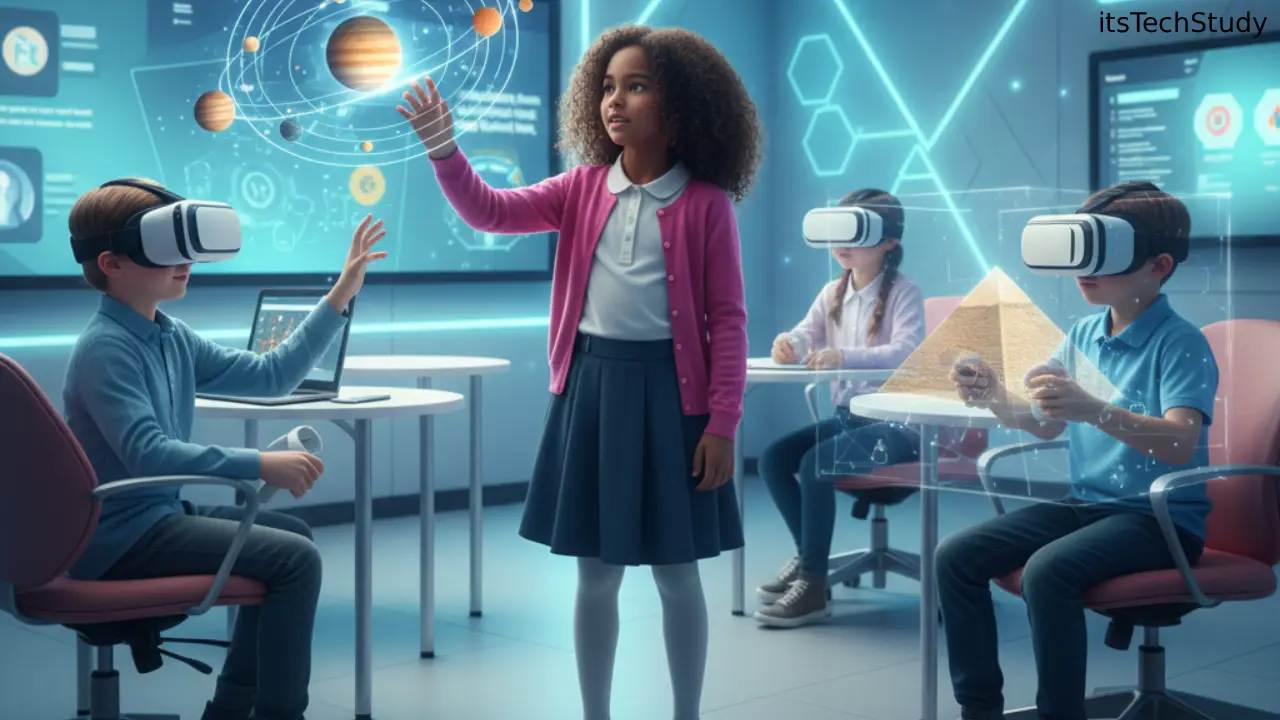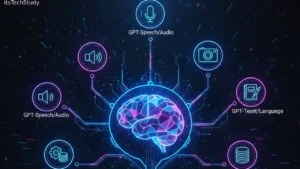Introduction: Augmented and virtual reality are reshaping how people learn by turning passive lessons into immersive, hands-on experiences that boost engagement, retention, and skill transfer across K‑12, higher education, and workforce training alike. As AI fuses with XR and hardware gets cheaper and cloud-connected, AR/VR is moving from pilots to full curricula, despite ongoing challenges around cost, access, and teacher training.
Why AR/VR learning matters
Education has wrestled for years with attention gaps, abstract concepts that feel distant, and uneven access to high‑quality labs and real‑world practice; AR/VR addresses these by simulating complex environments, enabling safe, repeatable practice, and making invisible systems visible in 3D. When implemented well, immersive lessons raise motivation and comprehension, and help students and professionals build confidence before stepping into real scenarios.
What AR and VR actually do
Augmented reality overlays digital content onto the real world via phones, tablets, or head‑mounted displays, enriching labs, textbooks, and field trips with interactive 3D objects. Virtual reality places learners inside fully simulated environments-operating rooms, factories, historical sites-so they can explore and practice with immediate feedback.
Evidence and outcomes
Studies and industry benchmarks point to improved motivation, empathy, and knowledge retention in immersive contexts, with case studies reporting double‑digit gains in learning metrics when AR/VR complements instruction rather than replaces it. Organizations also report faster time‑to‑competence and reduced training risks/costs when complex procedures move into VR simulations first.
What’s driving adoption in 2025
- Cheaper, lighter headsets and state‑of‑the‑art mobile devices lower the barrier for classrooms and training centers adopting AR/VR at scale.
- AI‑powered authoring, real‑time analytics, and adaptive feedback personalize experiences and cut content development time for educators.
- 5G and cloud streaming enable high‑fidelity scenes and multi‑user sessions without tethered PCs or expensive on‑prem setups.
Market outlook at a glance
Analysts forecast robust growth for AR/VR in education through the next decade, citing government programs, institutional investments, and expanding developer ecosystems across North America, Europe, and fast‑growing APAC regions. Projections point to double‑digit CAGR as immersive tools become mainstream in curricula and credentialed training.
Where AR/VR shines in learning
- Science and engineering labs: manipulate molecules, circuits, and physics visualizations with low risk and high repeatability.
- Medical and nursing: practice procedures, triage, and bedside communication in realistic scenarios before clinical rotations.
- History and social sciences: visit reconstructed sites or role‑play civic simulations to deepen context and empathy.
- Career and technical education: simulate heavy equipment, manufacturing cells, and safety protocols with consistent, trackable practice.
Pros and cons of AR/VR in education
Pros
- Higher engagement, retention, and motivation by turning abstract topics into interactive experiences.
- Safe, scalable practice for high‑risk tasks with standardized feedback and analytics.
- Equitable access to “impossible” experiences-rare labs, remote sites, or expensive equipment-via shared devices.
Cons
- Upfront hardware, content, and IT integration costs can strain budgets and slow rollouts.
- Teacher training, device management, and accessibility needs require ongoing support and planning.
- Not all content benefits from immersion; poor alignment with outcomes can reduce effectiveness.
Comparison table: AR vs. VR for education
Implementation blueprint for schools and universities
- Start with outcomes
Define learning objectives first-where confusion or risk is highest-and select XR only where it measurably improves understanding or performance. - Choose the right modality
Use AR for layered visualizations around physical objects and VR for high‑stakes practice or hard‑to‑access environments. - Pilot with a clear scope
Run a 6–10 week pilot in one course that includes metrics: completion time, assessment gains, confidence ratings, and accessibility audits. - Upskill instructors
Offer micro‑credentials on XR pedagogy, classroom management with devices, and basic content authoring aligned to curricula. - Plan device strategy
Mix carts of standalone headsets with bring‑your‑own mobile for AR; set policies for sanitation, updates, and check‑in/checkout. - Integrate with LMS and analytics
Connect sessions, grades, and telemetry to your LMS for rostering and to visualize progress and feedback loops. - Budget for content and maintenance
Allocate funds for templates, updates, and accessibility testing; revisit TCO annually as hardware and software evolve.
Content creation: from pilot to scale
- Leverage off‑the‑shelf modules for common topics, then customize with institution‑specific contexts and assessments.
- Use AI‑assisted tools to auto‑generate variations, hints, and scaffolding tuned to student performance.
- Adopt reusable assets and interoperable formats so scenes can move across devices and vendors.
Accessibility and inclusion
Design with captions, audio descriptions, adjustable comfort modes, and alternative pathways to ensure benefits reach all learners. Provide seated options, low‑motion settings, and controller‑free interactions to reduce motion discomfort and barriers to entry.
Enterprise training and lifelong learning
Immersive training is accelerating onboarding, safety compliance, and soft‑skills development across industries from manufacturing to healthcare and logistics. As credentials and micro‑certifications integrate XR scenarios, workers can practice, test, and verify competence with evidence trails for regulators and employers.
Budgeting and ROI
While initial investment can be substantial, institutions often offset costs via reduced lab consumables, fewer errors, accelerated mastery, and shared device pools; ROI strengthens as content libraries accumulate and are reused across cohorts and programs. Multi‑site virtual sessions and cloud distribution further cut travel and space needs, boosting long‑term efficiency.
Trends to watch next
- AI tutors inside XR: conversational guidance, real‑time formative feedback, and dynamic hints inside simulations.
- Cloud streaming and 5G: untethered, high‑fidelity sessions and shared environments at campus scale.
- Standards and credentials: institutions and vendors collaborating on portable, analytics‑rich XR learning records.
- Lightweight devices: thinner headsets and true mixed reality increase comfort and classroom feasibility.
Actionable rollout checklist
- Identify 2–3 high‑impact lessons where simulations or 3D visuals solve a real pain point this term.
- Select AR tools for enhanced labs/field trips; pick VR for one simulation‑heavy module to compare outcomes side‑by‑side.
- Train a faculty cohort and appoint student XR ambassadors to support peers and manage devices.
- Integrate sessions and scores into your LMS; instrument analytics to capture learning gains and iterate content.
- Publish a device hygiene and accessibility policy and run short acclimation sessions before full labs.
Conclusion
Immersive learning is moving from novelty to necessity as institutions look for measurable gains in engagement, mastery, and equity of access; AR/VR deliver those gains when aligned to clear learning objectives and supported with training and analytics. With AI‑powered authoring, lighter devices, and cloud‑enabled collaboration, the next wave will make immersive courses as routine as slides are today-more experiential, more inclusive, and more effective across the full spectrum of education and training.
Frequently asked questions
Q1: Is AR or VR better for classrooms?
Ans: AR is often the best starting point because it works on existing student devices and augments physical lessons; VR excels when you need full simulations for procedures, environments, or role‑play.
Q2: How much does it cost to get started?
Ans: Entry‑level AR can begin with existing smartphones/tablets and low‑cost apps; VR requires headsets, content licenses, and sanitization/storage workflows—costs that can be managed with device carts and phased rollouts.
Q3: Will immersive learning work for all subjects?
Ans: Not every topic benefits from immersion; prioritize areas where 3D context, safe practice, or presence significantly improves comprehension or confidence over slides or video alone.
Q4: What about motion sickness and safety?
Ans: Modern headsets include comfort modes and higher refresh rates, while best practices like shorter sessions, seated options, and gradual acclimation minimize discomfort for most learners.
Q5: How do we measure success?
Ans: Track pre/post assessments, time‑to‑competence, error rates, confidence scores, and participation analytics; tie results to course or workforce KPIs for clear ROI.
Q6: Is content hard to build?
Ans: Off‑the‑shelf modules cover common curricula; AI‑assisted authoring and reusable assets help teams customize quickly without advanced 3D skills.












No Comments Yet
Be the first to share your thoughts.
Leave a Comment